Canadians still prioritize government action on cost of living, poverty and food insecurity: Results from our 2025 public opinion survey
One of the goals of the Centre is to increase public awareness of and support for policies to reduce food insecurity in Canada. For the past five years, we have partnered with David Herle to run an annual nationally representative survey[1] to gauge public awareness and opinion of food insecurity.
Our 2025 results show strong support for governments to address costs of living and for policies that could reduce poverty and food insecurity. Some highlights of the research are found below. For full results, please email info@feedopportunity.com.
If you would like to use the data, please cite “The Maple Leaf Centre for Food Security and David Herle (June 10-14, 2025). Public insights on food insecurity. www.feedopportunity.com”.
After steadily increasing, the proportion of Canadians who report they are somewhat or much worse off than two years ago has started to plateau.
In 2021, The Centre began asking whether Canadians felt they were financially better or worse off than two years previous and we had seen a steady increase in the proportion of Canadians who felt they were worse off financially. This has started to level off in 2024 and 2025, with less than half (44%) stating they felt they were worse off than two years ago.
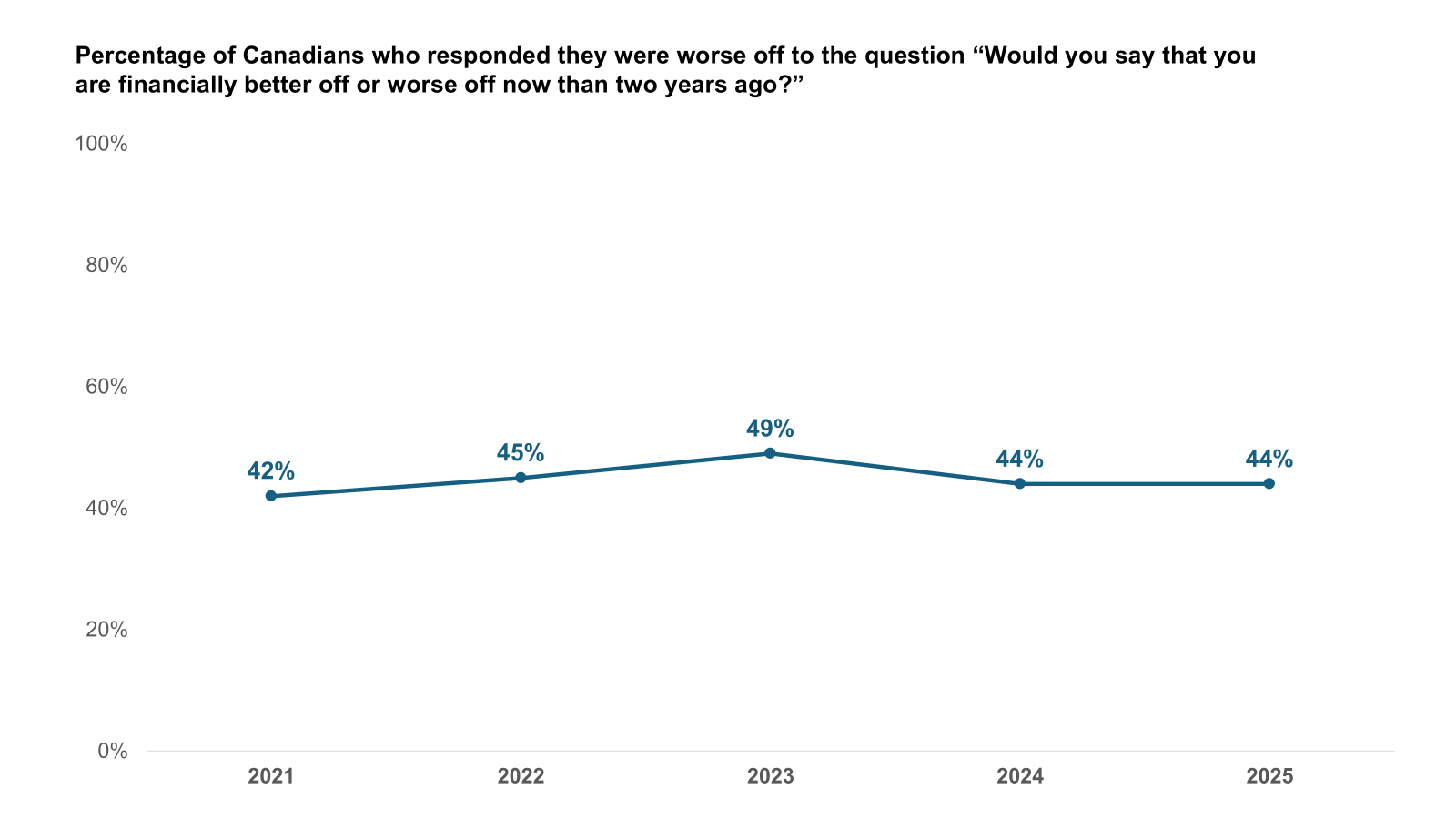
Canadians continue to be very concerned about the number of people living with poverty or food insecurity, just behind the rising price for essentials.
Almost all Canadians (89%) are concerned about the rising costs of essentials, with 60% reporting they are “very concerned”. Canadians are very or somewhat concerned that 1 in 3 children in Canada live in a food insecure home, that 10 million or 25.5% of people in Canada are food insecure, and that there has been a 90% increase in food bank usage compared to 2019 (83% each). Notably, the proportion of Canadians very concerned about their own ability to afford food has nearly tripled to 31% in 2025 from 12% when we began our polling in 2020. This is also the highest level of concern we’ve seen so far.
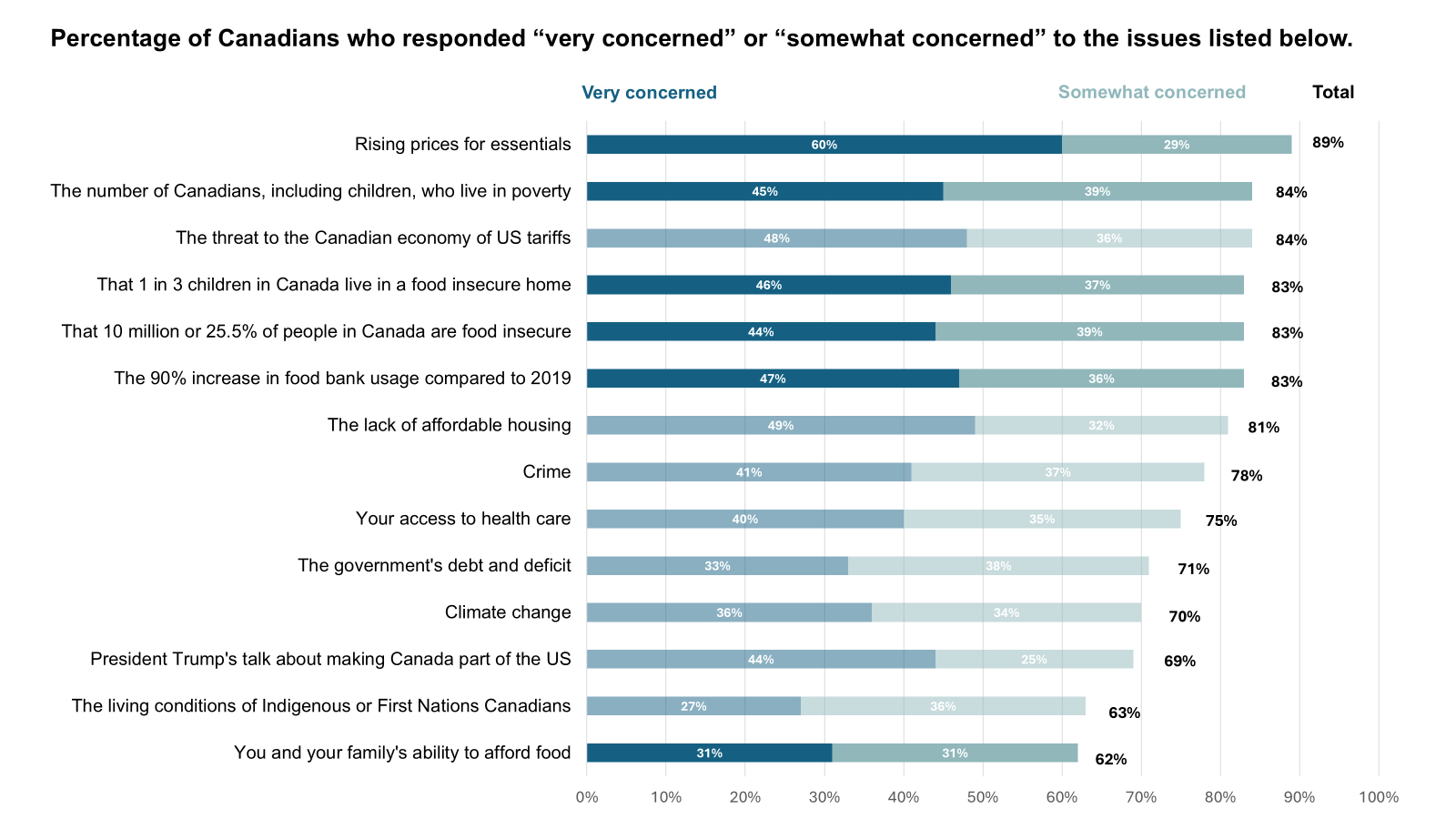
The term “food insecurity” continues to be familiar to most Canadians, though 2025 shows a slight decline for the first time since 2020.
We saw a significant growth in the proportion of Canadians who are familiar with the term “food insecurity” between 2020 and 2024, peaking at 77% in 2024. In 2025, 72% reported being somewhat or very familiar with the term.
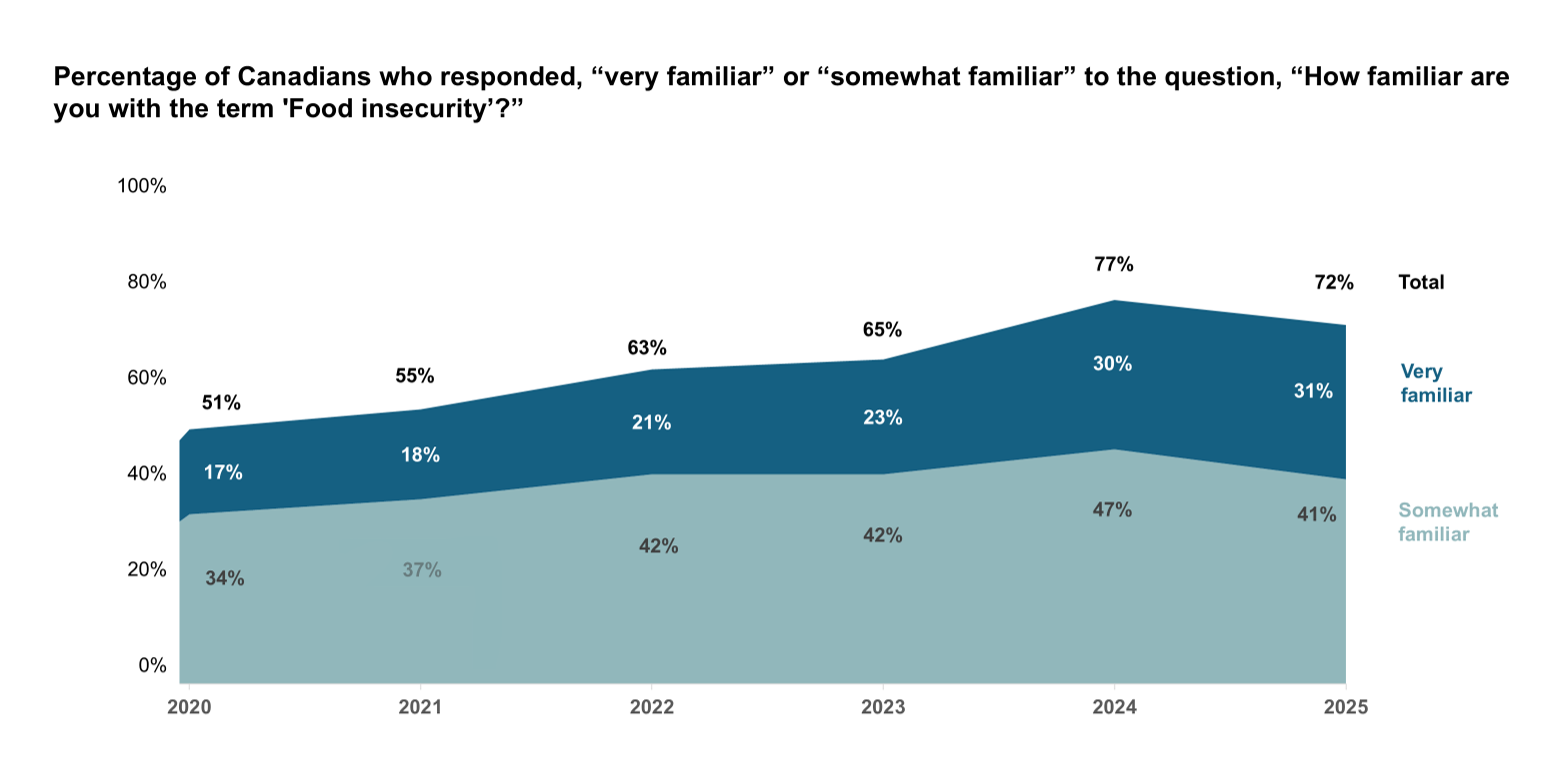
Canadians strongly believe in government intervention to address food insecurity.
Nearly all Canadians believe government should ensure no child in Canada goes hungry (86% strongly or somewhat agree) and that people going hungry in Canada goes against our Canadian values (82% strongly or somewhat agree). Broad support exists for food benefit programs, establishing a target to reduce food insecurity by 50%, and a free national school food program.
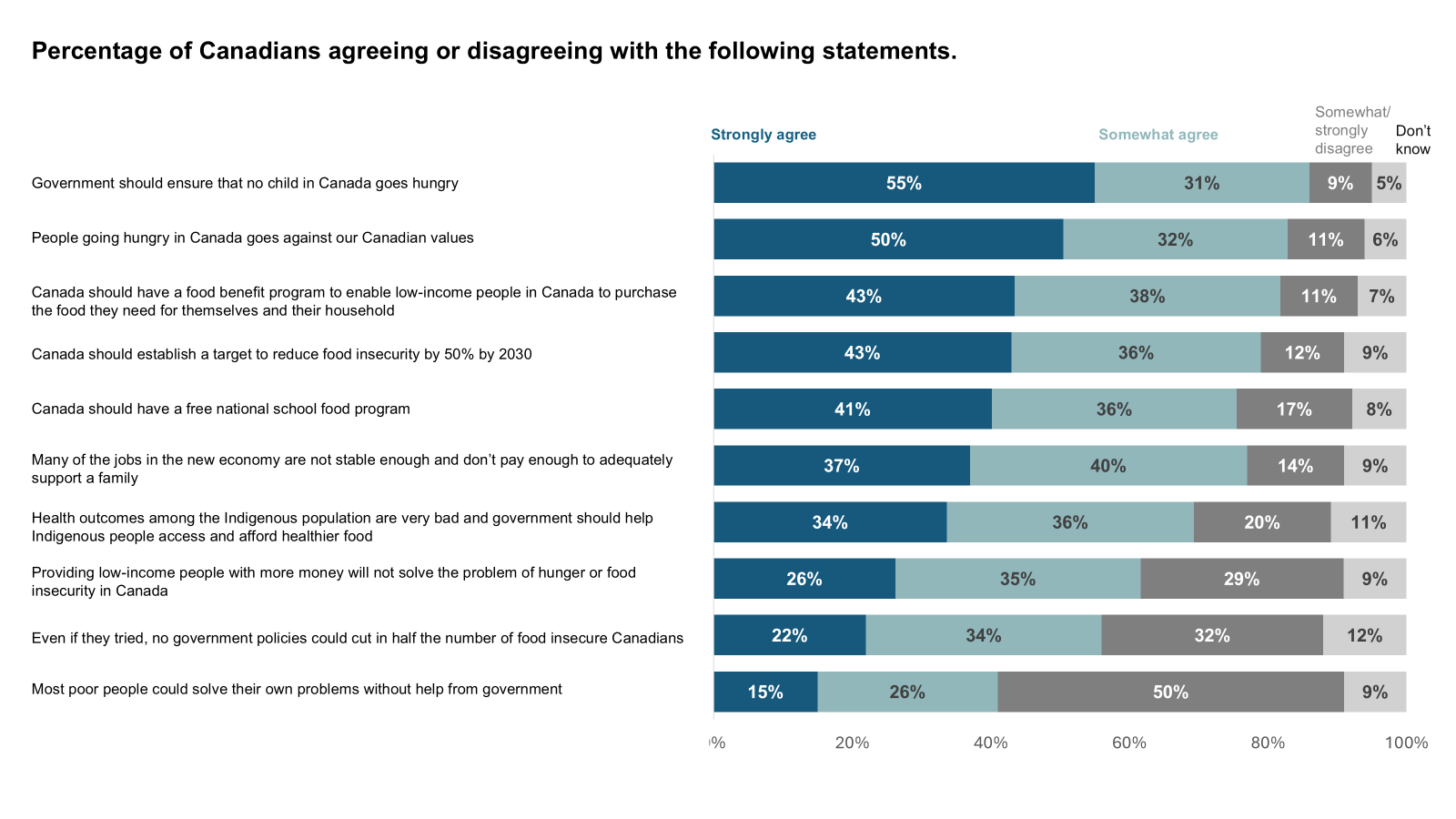
When asked to choose between policies, Canadians chose reducing poverty and food insecurity by a substantial margin over expanding the production and export of Canada’s natural resources like oil, gas, and minerals, and reducing greenhouse gas emissions which worsen climate change. Although by a narrower margin, they also selected reducing poverty and food insecurity over more subsidized housing for lower income Canadians and lowering personal and sales taxes.
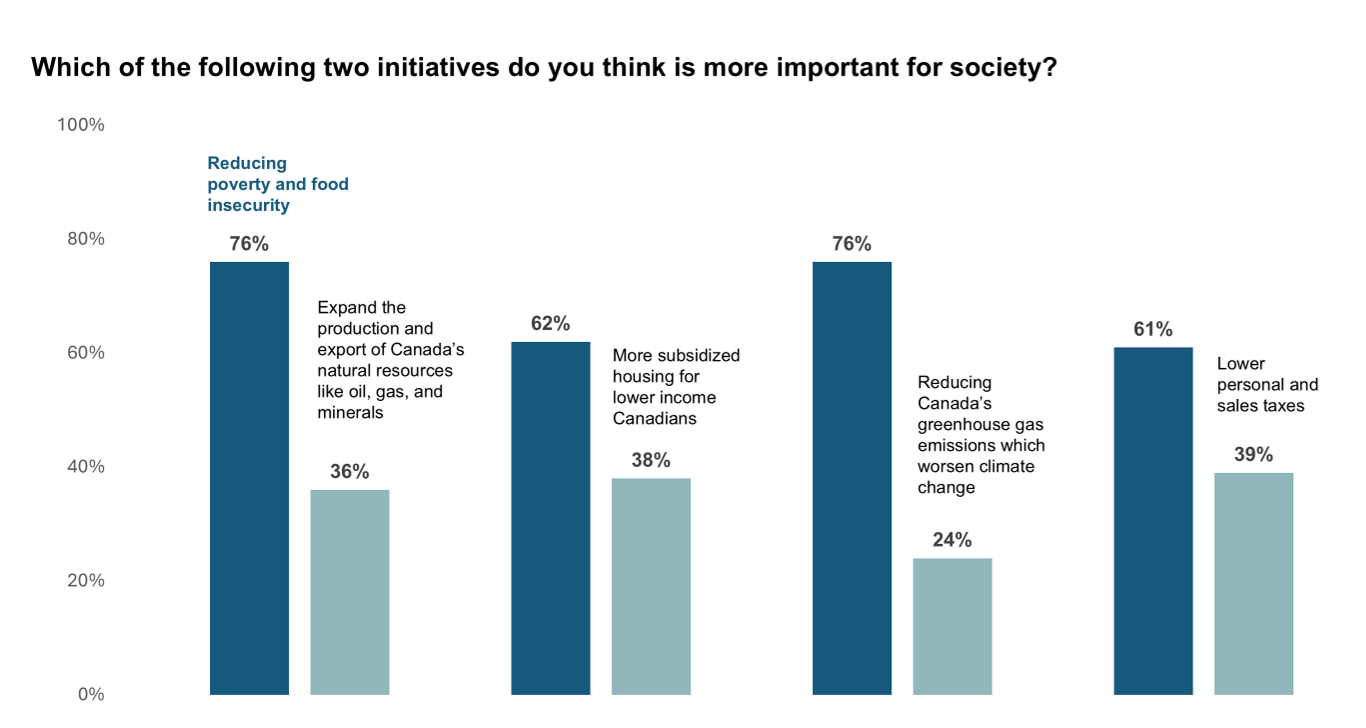
More than 4 in 5 Canadians support the adoption of a program that would provide low-income families money to purchase food.
83% of people surveyed said that they would support a program providing money for food to low-income families in Canada. Nearly as many (78%) would support the idea of the healthcare system prescribing fruits and vegetables to improve chronic diseases.
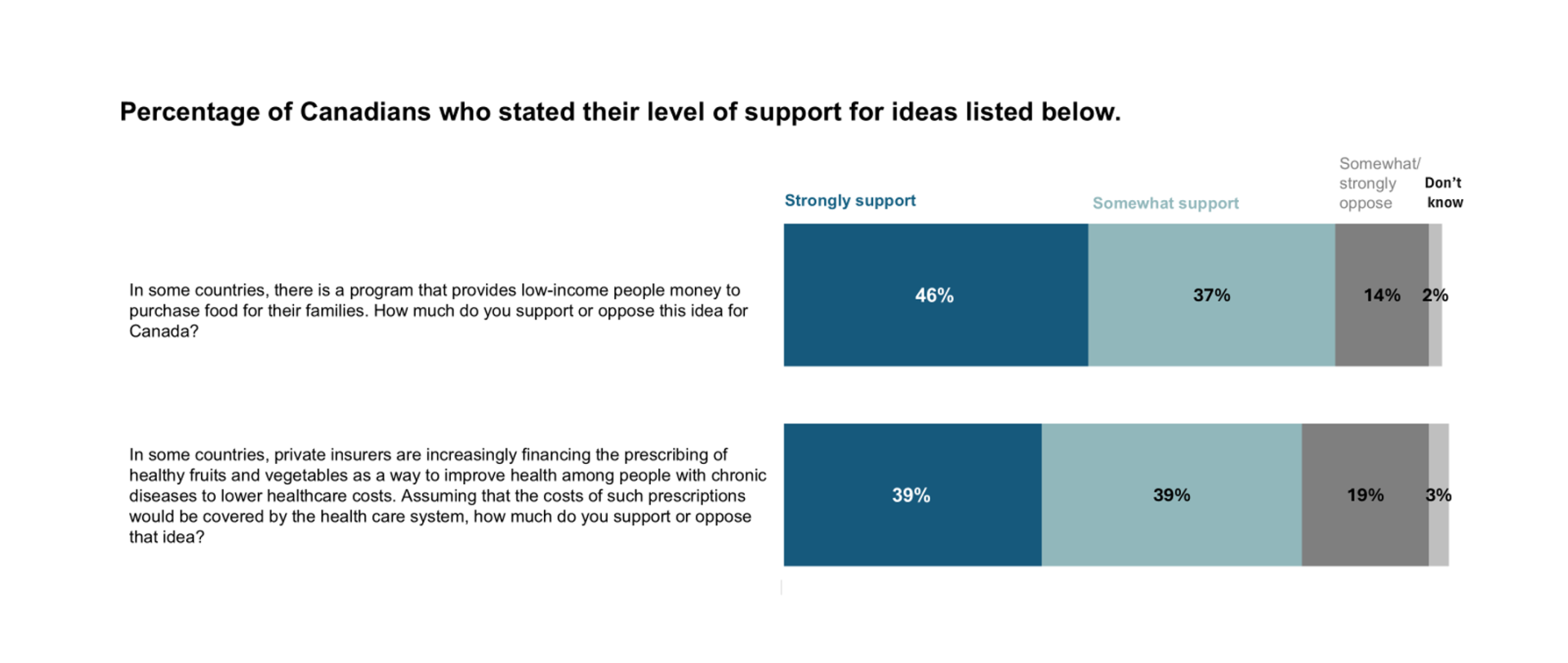
These results highlight the importance Canadians place on government intervention to strengthen the social safety net and reduce poverty and food insecurity. The Centre will continue to work with governments at all levels to design, improve and evaluate poverty reduction and food security policies and programs.
[1] From June 10-14, 2025, we surveyed 2,613 people in Canada, with quotas and weights to reflect the gender, age, education, household income, Indigenous ethnicity and regional distribution of adults in Canada (the margin of error for a probability-based sample would be +/- 2%, 19 times out of 20).
October 16, 2025